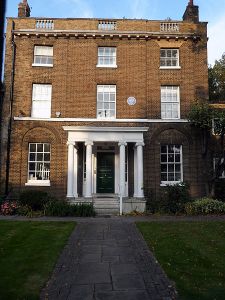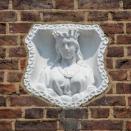Today Albert Gardens is the hub of a conservation area. The fact it’s there at all is down to the third greatest fire London ever saw – after the Great Fire of 1666 and before the London Blitz of 1940

I discovered Albert Gardens and its surrounding streets and squares when I met the two elderly pugs Harvey, 10 (RIP) and Bertie, 8.
The place and the area around it fascinates me so Harvey, Bertie and I have been exploring.

In 1794, the district surrounding what is now Commercial Road was called Ratcliffe, and in the mid-afternoon of 23 July that year, an incident resulted in the biggest fire to take place in London between the Great Fire of 1666 and the Blitz of 1940.

At 3pm that day, an unattended kettle of pitch boiled over and caught fire at Cloves Barge Builder’s Yard, Cock Hill setting it on fire. It was low tide on the river, with little water available for the parish pumps, so the flames rapidly spread to a barge that was loaded with saltpetre, used to make gunpowder and matches. The barge exploded violently and scattered burning debris causing further fires including one that engulfed the East India Company’s own saltpetre stores, which exploded “like a discharge of cannon.”
As the unstoppable inferno spread it invaded the narrow, cluttered streets of Wapping to the north and east. The flammable industries of the riverside, including timber merchants, rope yards, boat builders, beer sellers, chandlers and sugar warehouses were consumed or damaged in the blaze. The damage to just one sugar warehouse was estimated to cost £40,000 (equivalent to £5,480,000 today).
Firefighting was hampered by the area’s narrow streets and the River Thames’s low tide. Within just hours the fire destroyed 453 houses and left 1,400 people homeless. Only one building survived the Ratcliffe Fire of 1794; No. 2 Butcher’s Row, which can still be seen today. It was a fine ship owner’s house then, which later became a vicarage.
Tents were erected near St. Dunstan’s Church off Stepney High Street by the government of the day for a thousand people, who were forced to sleep in the fields, church, and nearby buildings. The Corporation of London, Lloyds and the East India Company contributed almost £2,000 (equivalent to around £43,500 today) to the relief of the homeless.

When Commercial Road was opened following the fire in 1810, the Mercers’ Company – now the Premier Livery Company of the City of London – owned vast tracts of land in the Ratcliffe area. As you walk around you may see the livery company’s Mercers’ Maiden symbol crafted out of stone and set into the fabric of buildings like the one at 485 Commercial Road, opposite Devonport Road.

Arbour Square, together with West Arbour Street, East Arbour Street and Arbour Terrace, was built on the 12-acre Arbour Field owned by the Mercers’ Company .
In 1819, it was laid out as a garden enclosure and up to 1830 the square was surrounded by three-storey houses. The street frontages in Albert Gardens across the Commercial Road are of a similar date to those across the road surrounding Arbour Square.
Albert Gardens (formerly Albert Square) was another 19th-century development responding to the creation of Commercial Road. It remains largely intact. It consists of three storey residential terraces, built in the early 1840s which face each other across a railed garden. The square opens up to the south of Commercial Road on its fourth side. The garden area forms the focus of the square. In 1899, there was a proposal to build houses on the garden square, but the London County Council bought the land and opened Albert Square Garden to the public in 1906. Albert Square Garden was renamed Albert Gardens in 1937.
